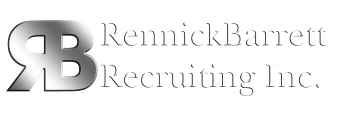
Job Title
Category
Location
Engineer Assistant (Substation Engineering)
Category
Architecture/Engineering
Location
Imperial, CA
Senior Electrical Engineer – Critical Power Systems
Category
Architecture/Engineering
Location
Sumter, SC
Clerical Technician
Category
Administrative
Location
Imperial, CA
Electric Powerline Inspector
Category
Construction/Facilities
Location
El Centro, CA
BIM & CAD Lead
Category
Location
Houston, TX
Project Manager
Category
Location
El Centro, CA
WOMEN'S HEALTH NURSE PRACTITIONER
Category
Healthcare
Location
Yakima, WA
Project Manager – Civil Construction
Category
Architecture/Engineering
Location
Woburn, MA
Law Firm Accounting Manager
Category
Legal
Location
Houston, TX
Principal Control Systems Scientist (R&D) / Medical Device
Category
Healthcare
Location
Irvine, CA
Commercial Litigation Paralegal
Category
Legal
Location
Garden City, NY
Sales Director
Category
Information Technology
Location
Los Angeles, CA
Senior Account Executive - Production Equipment
Category
Location
Dedham, MA
Sales Director – Renewable Energy Sector
Category
Location
Chicago, IL
Senior Industrial Process Safety - Dust
Category
Location
Orlando, FL
Safety, Health and Environmental Manager, Plant Level
Category
Location
Newport News, VA
Account Executive
Category
Location
New York, NY
Distribution Estimator I
Category
Architecture/Engineering
Location
La Quinta, California
General Manager - Custom Robotics & Automation Solutions
Category
Computer/Software
Location
Oak Creek, WI
Plant Manager
Category
Construction/Facilities
Location
Clare, MI
Lead Multi-State Payroll Administrator
Category
Administrative
Location
Hollywood, CA
Associate Attorney | Intellectual Property
Category
Legal
Location
Tustin, CA
Associate Attorney | Privacy
Category
Legal
Location
Tustin, CA
Forensic Electrical Engineer
Category
Architecture/Engineering
Location
Columbia, SC
CIVIL ENGINEER - CIVIL SITE DESIGN ENGINEER
Category
Architecture/Engineering
Location
Englewood, CO
Structural Engineer - Nuclear or Power Plant Design
Category
Architecture/Engineering
Location
Atlanta, GA
Civil / Structural Forensic Engineer
Category
Architecture/Engineering
Location
Atlanta, GA
Engineering Assistant (Dist Capital Projects)
Category
Architecture/Engineering
Location
La Quinta, CA
Tax Manager - Public Accounting
Category
Accounting/Finance
Location
Phoenix, AZ
Trusts and Estate Tax Manager
Category
Location
Phoenix, AZ
IT Business Architect (Oracle)
Category
Manufacturing
Location
Romeo, MI
Maintenance Coordinator
Category
Manufacturing
Location
Jackson, TN
Outside Sales Representative
Category
Sales
Location
Charlottesville, VA
Legal Secretary - Litigation
Category
Legal
Location
Sausalito, CA
Site Civil Engineer
Category
Architecture/Engineering
Location
Charlotte, NC
Physician
Category
Healthcare
Location
California City, CA
ESTIMATOR
Category
Construction/Facilities
Location
Dallas, TX
Escrow Officer
Category
Real Estate
Location
La Quinta, CA
Senior Catering Manager
Category
Hospitality/Travel
Location
Boston, MA
Sr Engineer, High Voltage Cable Design
Category
Manufacturing
Location
Huntersvillle, NC